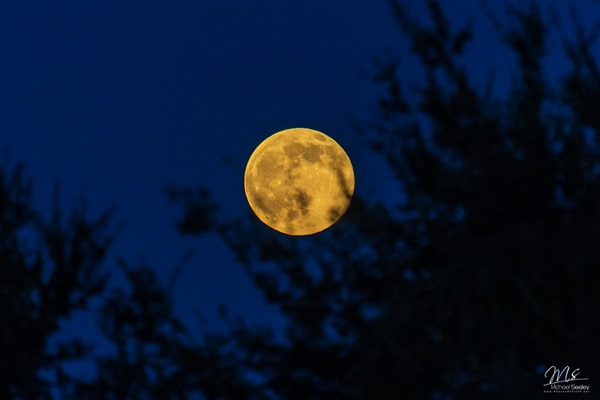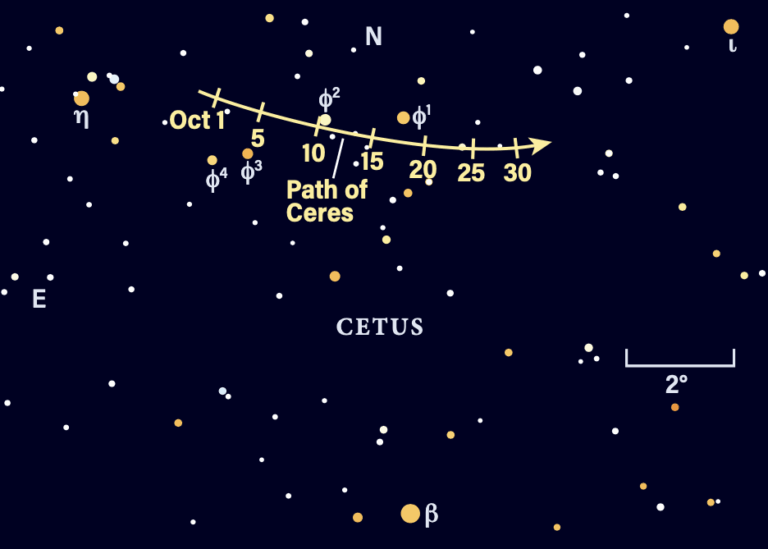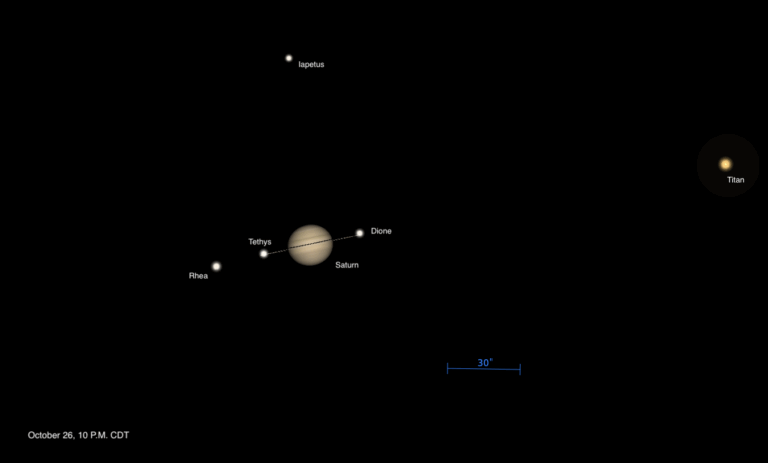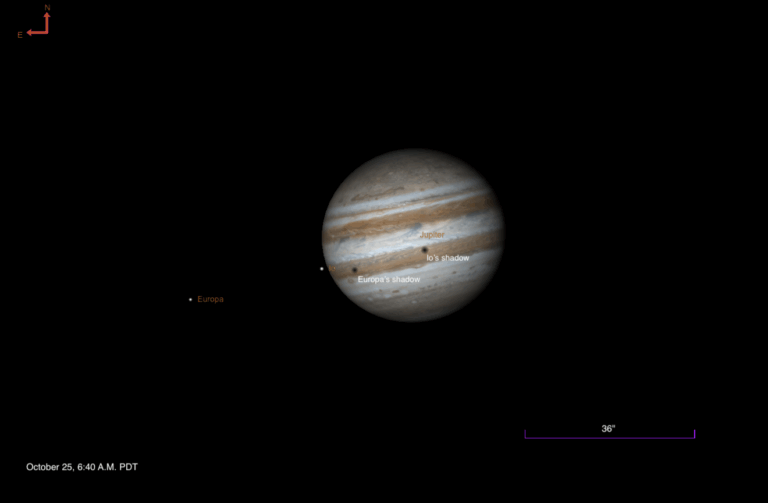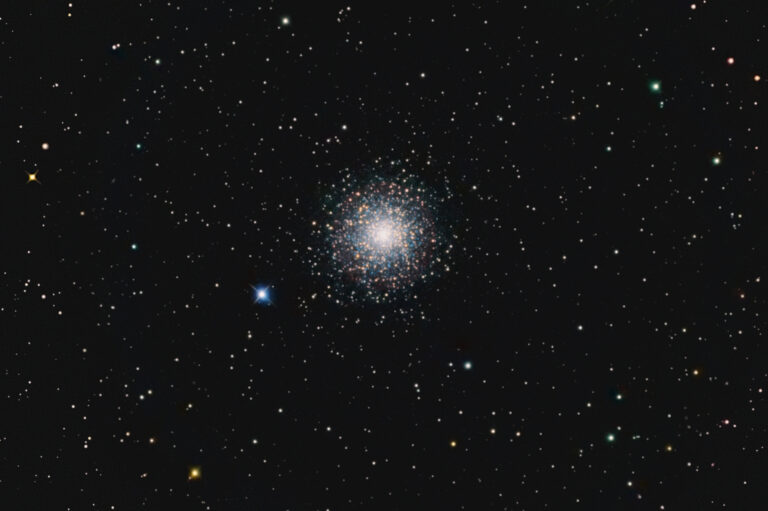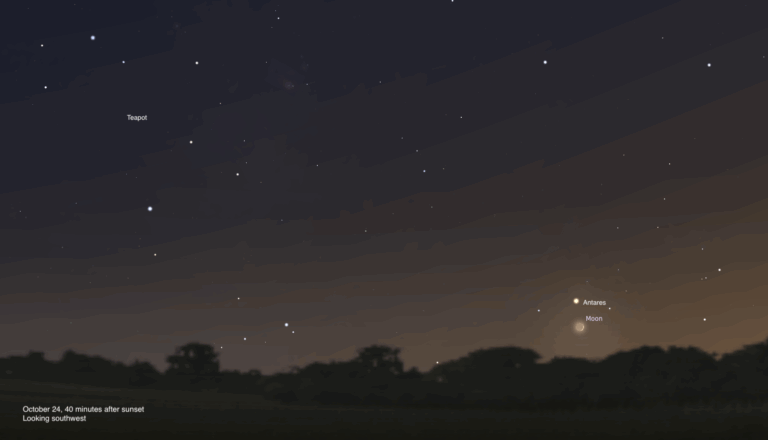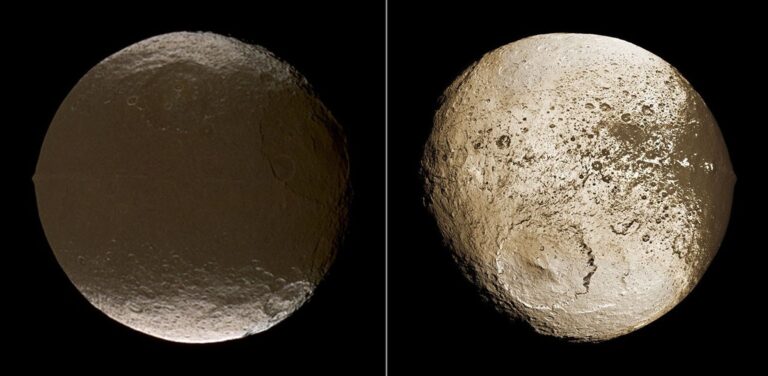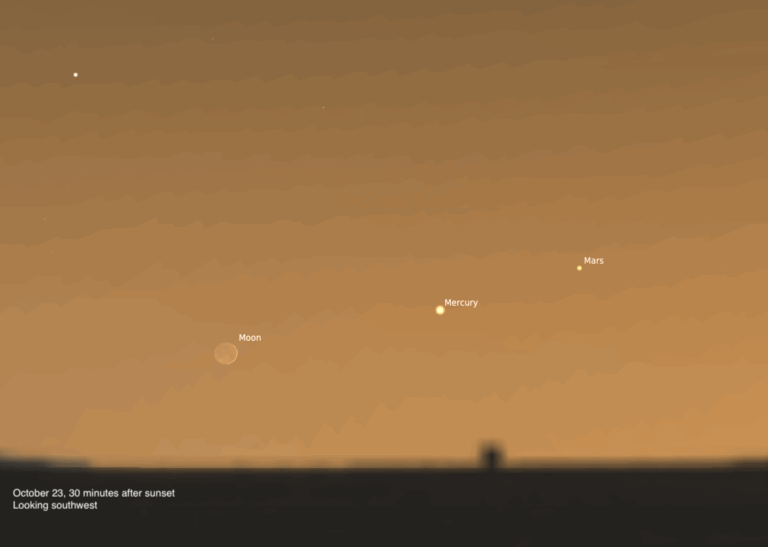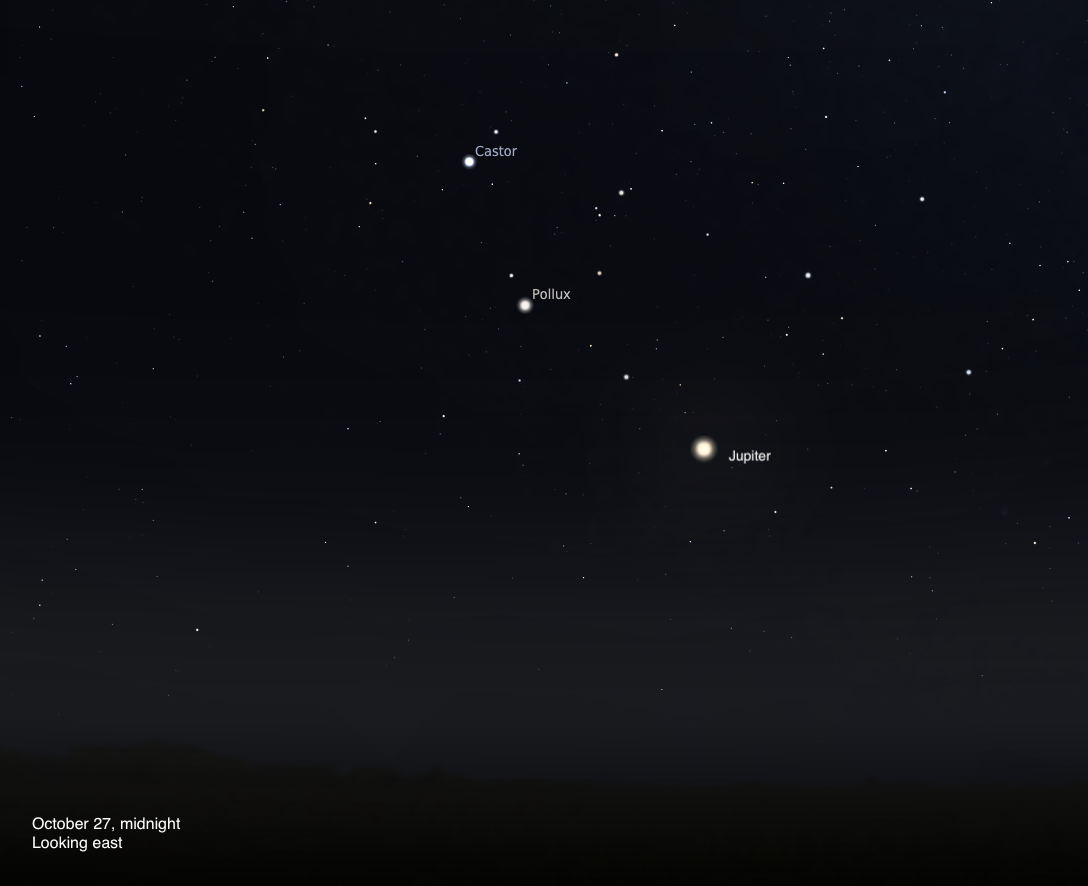
Key Takeaways:
- Jupiter will be observable in Gemini, passing 7° south of Pollux at 11 A.M. EDT, with a visual magnitude of –2.2.
- The prominent stars Pollux and Castor are described, with Pollux noted as a magnitude 1.2 golden star and Castor as a magnitude 1.6 blue-white double star.
- An occultation event of Jupiter's moon Io is predicted for the 28th, with ingress into Jupiter's shadow occurring just after 12:10 A.M. EDT and egress around 3:45 A.M. EDT.
- Iapetus will reach inferior conjunction on October 26.
Looking for a sky event this week? Check out our full Sky This Week column.
October 26: Iapetus at inferior conjunction
Jupiter passes 7° south of Pollux in Gemini at 11 A.M. EDT. You can catch the pair late this evening, visible by midnight local daylight time in the east and rising higher into the early-morning hours. Jupiter can’t be missed, glowing at magnitude –2.2 to the lower right of Castor and Pollux, the Twins’ heads.
Pollux is the lower and more golden of the pair — it’s also slightly brighter, shining at magnitude 1.2. Castor above it appears more blue-white and is magnitude 1.6. Castor is a famous double star, visible as two points of light through a telescope. One component is 2nd magnitude, while the other is a fainter 3rd magnitude.
Aim your telescope at Jupiter and East Coast observers can catch a disappearing act as Io, off to the planet’s west, disappears just after 12:10 A.M. EDT on the 28th, winking out as it passes into Jupiter’s long, dark shadow. Io will reappear from occultation about 3:45 A.M. EDT (now the 28th across the U.S.), when it pops into view off the northeastern limb.
Sunrise: 7:24 A.M.
Sunset: 6:03 P.M.
Moonrise: 1:16 P.M.
Moonset: 10:09 P.M.
Moon Phase: Waxing crescent (35%)
*Times for sunrise, sunset, moonrise, and moonset are given in local time from 40° N 90° W. The Moon’s illumination is given at 10 P.M. local time from the same location.

